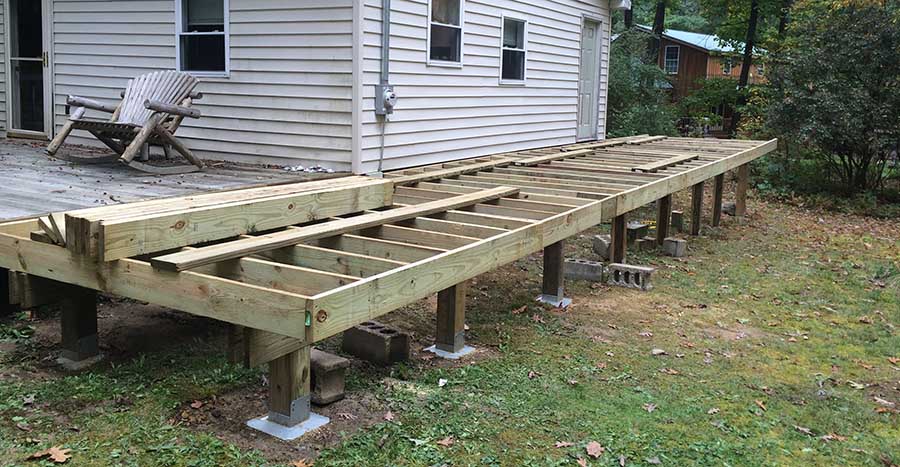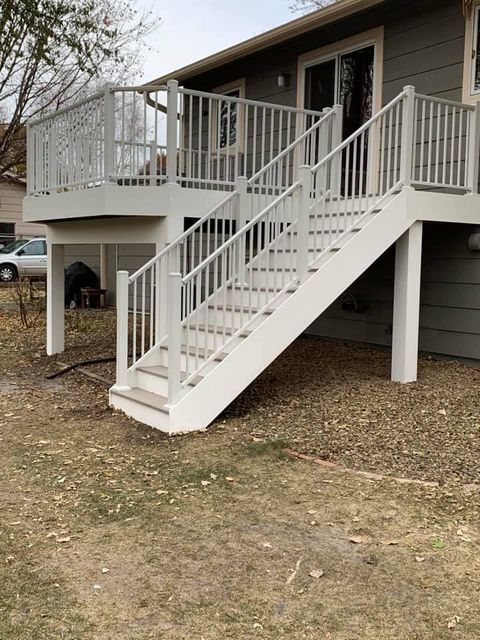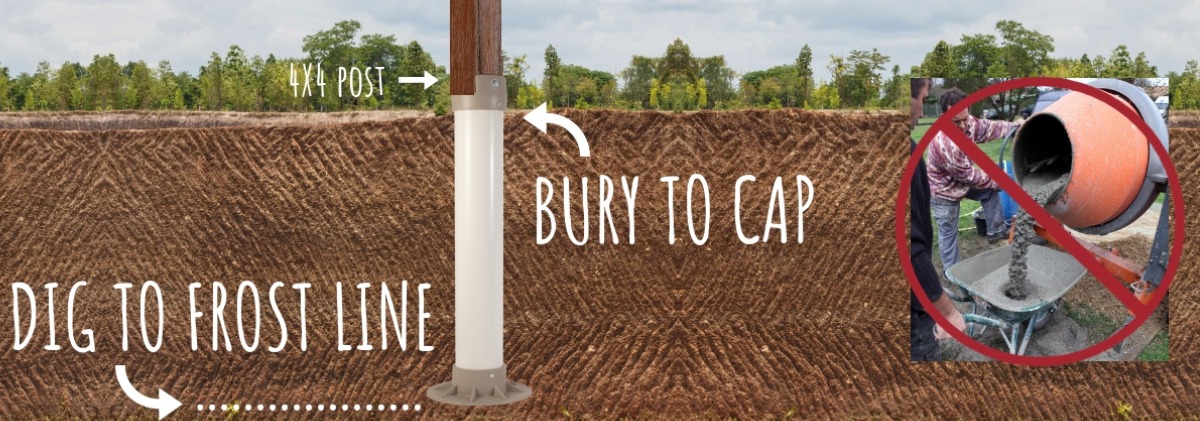Guarantee Stability and Longevity With Effectively Installed Deck Grounds
Deck grounds might not be one of the most attractive element of deck building, but they play an important function in making sure security and durability. Correctly installed grounds supply a solid foundation for your deck, avoiding typical concerns like sagging, moving, and also collapse. Selecting the best type of footing and correctly mounting it can be a complicated procedure. In this discussion, we will certainly explore the importance of appropriate deck footings, variables to consider during installation, various kinds of footings readily available, step-by-step setup guide, and upkeep tips for ensuring long-lasting footings. If you want to guarantee the security and long life of your deck, keep checking out to discover the crucial insights to accomplish a long lasting and structurally sound exterior area.

Significance of Proper Deck Grounds
Why are correctly set up deck grounds critical for the stability and durability of your deck? Deck footings are the structure on which the deck relaxes, moving the tons from the deck to the ground.
Firstly, correctly mounted deck footings disperse the weight of the deck evenly, stopping any type of uneven settling or sinking. This is specifically vital in areas with unstable dirt, as it assists to alleviate the danger of the deck collapsing or changing. In addition, well-installed footings make sure that the deck continues to be level, protecting against any architectural damage that can take place when a deck ends up being unequal.
Secondly, correctly installed grounds offer a solid support for the deck, preventing extreme activity and persuade. This aids to preserve the architectural integrity of the deck, minimizing the risk of injuries or crashes. It likewise decreases the deterioration on the deck, permitting it to endure the aspects and normal usage for a longer time period.
Variables to Consider for Deck Footing Setup
When installing deck footings, there are several important variables to take into consideration for appropriate setup. Different soil kinds have different load-bearing abilities, so it is important to carry out a soil examination to make sure the grounds can sustain the weight of the deck and its owners. By taking right into account these elements, you can make certain the correct setup of deck footings and delight in a resilient and secure deck.
Kinds of Deck Footings to Pick From
There are a number of different kinds of deck footings available for you to select from. Each kind has its own benefits and downsides, so it's vital to consider your certain needs and the conditions of your deck prior to deciding.
One common type of deck footing is the concrete ground. This involves digging holes in the ground and putting concrete into them to create a solid structure. Concrete grounds are resilient and supply outstanding security, making them appropriate for decks in areas with difficult soil problems or high wind lots.
An additional choice is the helical pier footing, which contains a steel shaft with helical plates that are screwed right into the ground. These grounds are fast to set up and can be utilized in different dirt kinds, including sandy or clay soils. They are likewise flexible, permitting easy progressing of the deck.
Sonotube footings are another preferred choice. These footings are developed by putting a cardboard tube in a hole and filling it with concrete. Sonotube footings are reasonably easy to mount and provide appropriate security for smaller sized decks or in locations with much less demanding dirt problems.

When selecting the kind of deck ground, it's important to consider variables such as soil conditions, deck dimension and weight, local building regulations, and personal choices. By picking the proper ground kind, you can make certain the stability and long life of your deck.
Step-by-Step Overview for Putting Up Deck Footings

Identify the place: Begin by noting the precise position of each ground utilizing stakes and string (Deck Footings). Take into consideration any type of regional building regulations or policies see post concerning trouble ranges
Dig the holes: Use a post hole digger or an auger to dig the holes for the grounds. Typically, a deepness of at least 36 inches is suggested for stability.
Level the openings: Ensure that all-time lows of the openings are degree (Deck Footings). This can be accomplished by utilizing a level or a straight board across the top of the openings
Include gravel: Area a layer of gravel at the end of each opening to improve drain and prevent the ground from sinking right into the soil gradually.
Insert the footing forms: Insert the ground develops right into the openings, ensuring they are centered and degree. Usage stakes to safeguard them in location.
Mix and pour concrete: Adhere to the directions on the concrete mix bag to prepare the concrete. Pour the concrete right into the footing types, filling them entirely.
Smooth the surface: Use a trowel to smooth the surface of the concrete and eliminate any kind of air pockets. Permit the concrete to treat according to the maker's guidelines.
Maintenance Tips for Lasting Deck Grounds
Proper maintenance is important for making certain the durability and security of deck grounds. By regularly inspecting and maintaining your deck grounds, you can prevent damages and possible safety and security pop over to this site threats. One important aspect of maintenance is to consistently look for any type of signs of deterioration, such as splits or motion in the grounds. If you observe any concerns, it is essential to address them without delay to avoid more damage.
Routine cleansing is also necessary for maintaining deck footings. Plant life, dirt, and debris can build up around the grounds, which can bring about moisture buildup and decay. Cleaning the footings on a regular basis, utilizing a stress or a brush washer, can aid prevent these concerns and expand the lifespan of visit site your deck.
In addition to cleansing, it is essential to keep the area around the grounds free from any kind of blockages. Stay clear of stacking items against the footings or allowing plants to grow as well near to them. These blockages can trap moisture and cause the footings to weaken in time.
Finally, routine resealing of the footings is suggested to secure them from wetness and various other environmental aspects. Applying a water resistant sealer can help stop water damages and prolong the life-span of the grounds.
Conclusion
To conclude, proper installment of deck footings is vital for making sure stability and long life of your deck. Factors such as dirt kind, tons capability, and local building regulations require to be taken into consideration when picking the ideal kind of deck footings. Following a detailed overview for setup and regular upkeep will certainly assist to ensure the grounds stay long-lasting and sturdy.
In this discussion, we will certainly discover the significance of proper deck grounds, aspects to consider throughout setup, different kinds of footings offered, step-by-step installment guide, and upkeep suggestions for ensuring durable footings. Deck grounds are the foundation on which the deck relaxes, transferring the lots from the deck to the ground.One typical kind of deck footing is the concrete ground. Place the ground types: Put the footing creates into the openings, ensuring they are focused and level.In final thought, proper setup of deck grounds is vital for guaranteeing security and longevity of your deck.